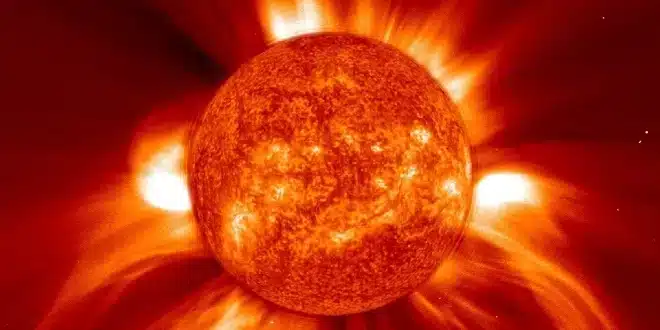The sun is currently experiencing a surge in activity, with a large sunspot, AR3901, gradually rotating towards Earth. This sunspot is expected to release solar flares directed at our planet, potentially causing both auroras and radio blackouts. AR3901 has already produced some flares, and more are anticipated in the coming days.
On Monday, the sun emitted nine M-class solar flares, most of which originated from this active region. Although Earth wasn’t in the direct path of these flares, the situation may change as the sunspot rotates into a position where it can target our planet.
The NOAA Space Weather Prediction Center (SWPC) reported that solar flare activity has remained elevated, with 10 M-class flares recorded, including one particularly strong M3.7 flare. The sunspot has been challenging to analyze due to its location near the sun’s eastern limb, but it is still responsible for much of the flare activity.
The SWPC forecasted a 55% likelihood of M-class flares and a 10% chance of X-class flares on Tuesday, with the chances increasing on November 20 and 21. For Wednesday, the probability of M-class flares rises to 60%, with a 15% chance of X-class flares.
These solar flares can lead to radio blackouts, which occur when the sun’s atmosphere releases sudden bursts of radiation. The intensity of these bursts is so great that they can release energy comparable to millions of hydrogen bombs. Solar flares can disrupt radio communications, interfere with GPS systems, and cause satellite malfunctions. The severity and duration of the blackouts depend on the flare’s intensity, which is classified into five categories based on X-ray intensity: A, B, C, M, and X, with X-class flares being the most powerful but least common.


